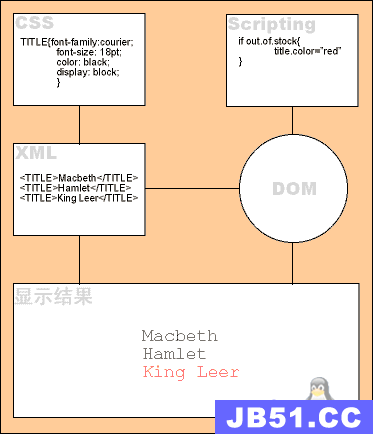我已经和它斗争了一段时间了,但还没有找到一个明确的答案.
据我所知,我可以将数据存储在XML文件中,使用XSD验证它,然后使用XSLT巧妙地显示数据.
但是,我一直在尝试执行XPath查询以选择我希望在XSLT中显示的数据时遇到问题.当我使用像’.//’或’*’这样的通用选择器时,我会得到我期望的结果.但是当我尝试使用更具体的选择器时,例如:’root / responses’或其他任何变体,我都没有得到任何结果.
XSD正确验证了XML文件,所以我想我的数据至少有点正确.当我删除XML文件中的XSD引用时,有效地删除了数据验证,我的XPath查询突然发挥作用!有什么我想念的吗?我已经尝试添加命名空间引用到XSLT但无济于事.
我在下面描述了XSD,Sample XL和Sample XSLT.任何帮助或提示将不胜感激!
定义结构的XSD如下.这个XSD描述了一个简单的文档,它嵌套了三个元素,并应用了约束;响应代码必须是唯一的.
<?xml version="1.0" encoding="utf-8"?>
<xs:schema id="uitext"
targetNamespace="http://foo.bar/responsecode.xsd"
elementFormDefault="qualified"
xmlns:responsecodes="http://foo.bar/responsecode.xsd"
xmlns:xs="http://www.w3.org/2001/XMLSchema">
<xs:element name="root" type="responsecodes:roottype">
<xs:key name="responseCode">
<xs:selector xpath="responsecodes:responses/responsecodes:response">
<xs:annotation>
<xs:documentation>All defined responsecodes</xs:documentation>
</xs:annotation>
</xs:selector>
<xs:field xpath="@code">
<xs:annotation>
<xs:documentation>Unique responsecode</xs:documentation>
</xs:annotation>
</xs:field>
</xs:key>
</xs:element>
<xs:complexType name="roottype">
<xs:sequence>
<xs:element name="responses" minOccurs="1" maxOccurs="1" type="responsecodes:responseList">
<xs:annotation>
<xs:documentation>Defined responsecodes</xs:documentation>
</xs:annotation>
</xs:element>
</xs:sequence>
</xs:complexType>
<xs:complexType name="responseList">
<xs:sequence>
<xs:element name="response" minOccurs="0" maxOccurs="unbounded" type="responsecodes:response"/>
</xs:sequence>
</xs:complexType>
<xs:complexType name="response">
<xs:sequence>
<xs:element name="description" type="xs:string" minOccurs="0" maxOccurs="1">
<xs:annotation>
<xs:documentation>
Explains the use of the responsecode.
</xs:documentation>
</xs:annotation>
</xs:element>
</xs:sequence>
<xs:attribute name="code" type="xs:string" use="required">
<xs:annotation>
<xs:documentation>Unique code representing the response provided.</xs:documentation>
</xs:annotation>
</xs:attribute>
</xs:complexType>
</xs:schema>
示例XML文档可以如下:
<?xml version="1.0" encoding="utf-8"?>
<?xml-stylesheet type="text/xsl" href="responsecode.xsl"?>
<root xmlns="http://foo.bar/responsecode.xsd"
xmlns:xsi="http://www.w3.org/2001/XMLSchema-instance"
xsi:schemaLocation="http://foo.bar/responsecode.xsd responsecode.xsd">
<responses>
<response code="firstCode">
<description>Explanation of first code</description>
</response>
<response code="secondCode">
<description>Explanation of second code</description>
</response>
<response code="thirdCode">
<description>Explanation of third code.</description>
</response>
</responses>
</root>
XML文件中引用的测试XSLT文档如下所示. (这将以类似VS2008枚举定义的格式显示代码,但旁边除外)
<?xml version="1.0" encoding="iso-8859-1"?>
<xsl:stylesheet version="1.0" xmlns:xsl="http://www.w3.org/1999/XSL/Transform">
<xsl:template match="/">
<html><body><h2>Responses</h2>
<xsl:for-each select="root/responses/response">
<xsl:choose>
<xsl:when test="description != ''">
<br/>'''<description>
<br/>'''<xsl:value-of select="description" />
<br/>'''</description>
</xsl:when>
</xsl:choose>
<br/>
<xsl:value-of select="@code" />
</xsl:for-each>
</body>
</html>
</xsl:template>
</xsl:stylesheet>
简单问题:您的XML元素位于XSLT一无所知的命名空间中.
<root xmlns="http://foo.bar/responsecode.xsd">
<responses>
<!-- ... -->
</responses>
</root>
把你的< root>和所有后代元素到“http://foo.bar/responsecode.xsd”命名空间.
像这样更改你的XSL:
<xsl:stylesheet
version="1.0"
xmlns:xsl="http://www.w3.org/1999/XSL/Transform"
xmlns:foo="http://foo.bar/responsecode.xsd"
exclude-result-prefixes="foo"
>
<xsl:template match="/">
<html>
<body>
<h2>Responses</h2>
<xsl:for-each select="foo:root/foo:responses/foo:response">
<!-- ... -->
</xsl:for-each>
</body>
</html>
</xsl:template>
</xsl:stylesheet>
请注意声明命名空间的方式并给出前缀.稍后,使用该前缀引用该命名空间中的所有节点. exclude-result-prefixes用于确保命名空间不会不必要地出现在输出中.

